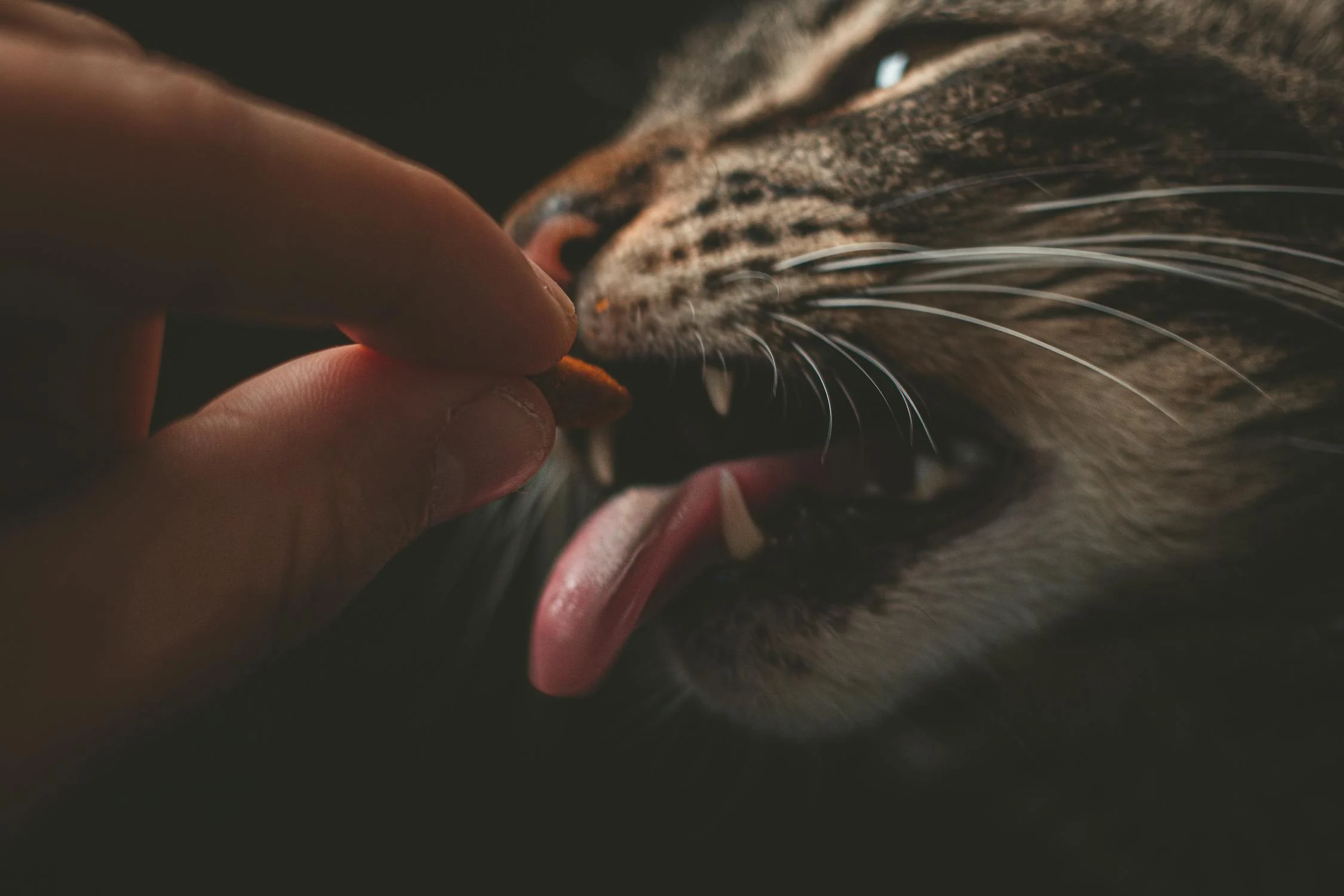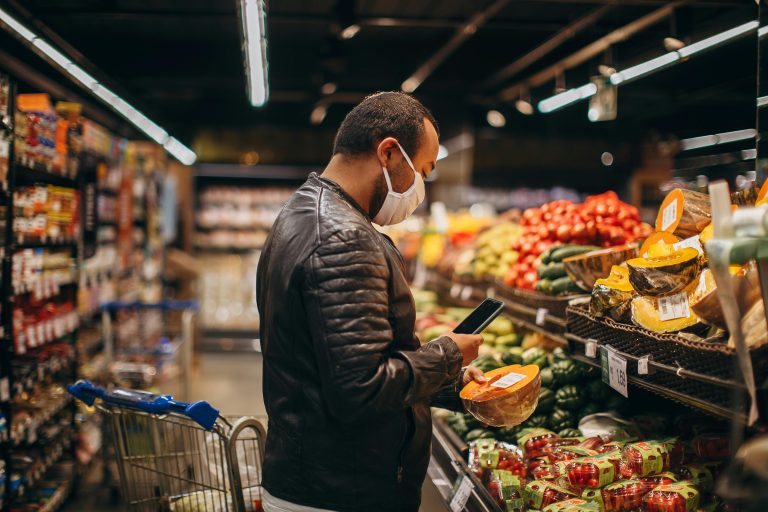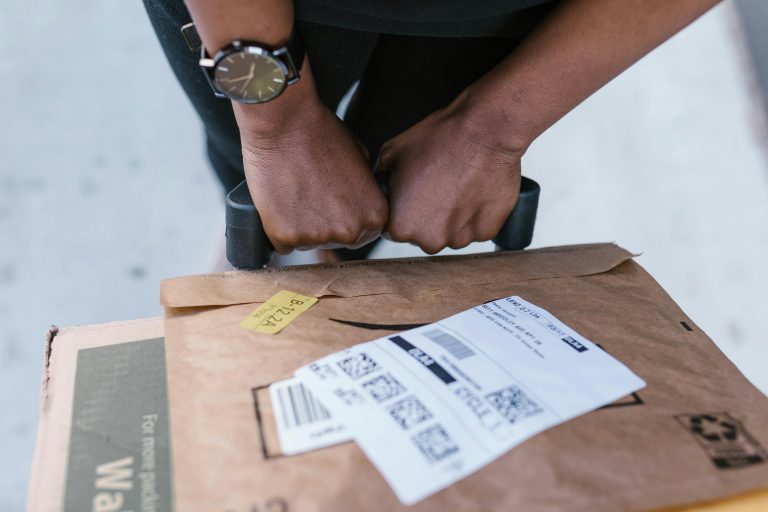According to a survey conducted by the Italian Ipsos, 79% of owners consider pets to be full members of the family. And this happens not only in Italy where there are 53.1 pets per 100 inhabitants, with dogs in pole position. The Bel Paese ranks second in Europe: Hungary comes first, with 54.2 pets per 100 people, while France has 49.1 pets per 100 people.
The love for animals is not only demonstrated for dogs and cats, but is increasingly widespread, especially with regards to ethical issues related to the animal world: many more nowadays say “no” to vivisection, hunting, the production and use of fur or of animals in circuses.
Recent studies show that 78% of consumers don’t feel food is safer now compared to last year. Pet owners share similar concerns – 46% worry their pets might get sick from their food. Consumer confidence has dropped by 48%, showing a major trust gap across the industry.
Pet food companies now use better tracking systems because consumers want more transparency. Many brands have switched from paper records to electronic ERP systems that use barcode scanning. This helps them track ingredients better through the supply chain. Brands can build trust and prevent food fraud by knowing where their ingredients come from. Yet 52% of consumers still lack confidence in current food inspection systems. This shows pet food manufacturers need stricter compliance standards.
This piece is about how the pet food supply chain faces hidden risks. It looks at gaps in regulations, ways to track ingredients, and how recalls affect consumer trust. Modern technology changes safety standards from “barn-to-bowl”. Industry players must understand these challenges as stakeholders demand perfect safety processes.
Regulatory Gaps in Pet Food Supply Chains
Pet food regulatory oversight remains split between multiple agencies. This fragmentation creates major compliance challenges throughout the supply chain.
Animal feed is compliant with the law if it is safe, wholesome, genuine, of high quality, labeled, packaged, and presented in accordance with current regulations, has no harmful effects on animal welfare or the environment, and does not contain restricted or prohibited materials such as feces, urine, hides and skins treated with tanning agents, solid urban waste, seeds and other plant materials treated with pesticides and derivatives.
Pet Food: European Regulations
Above all the EC Regulation 767/2009 defines the rules for labeling, declarations, and other forms of communication to ensure accurate and truthful information for consumers.
There are other reference standards in Europe that regulate the pet food and pet feed market:
- EC Regulation 178/2002 (basic principles for food safety in pet food);
- EC Regulation 183/2005 (feed hygiene requirements);
- EC Regulation 1069/2009 (requirements for animal by-products and derived products not intended for human consumption);
- EC Regulation 142/2011, which contains provisions for the implementation of Regulation (EC) No. 1069/2009 of the European Parliament and of the Council on health rules for animal by-products and derived products not intended for human consumption;
- EC Regulation 999/2001, which contains measures to combat transmissible spongiform encephalopathies (TSEs), with restrictions on specified risk materials and import/export rules and restrictions for processed animal proteins;
- EC Regulation 1831/2003, which regulates the use of additives permitted in pet food and animal feed in general, with any maximum limits;
- Directive 2002/327 on undesirable substances in pet food: establishes maximum limits for certain contaminants (heavy metals, mycotoxins, dioxins, etc.), specifications for raw materials and animal species.
FSMA and CGMP Requirements for Pet Food
The Food Safety Modernization Act (FSMA) brought a fundamental transformation in pet food safety. The focus changed from reactive measures to preventive ones. The Preventive Controls for Animal Food (PCAF) rule under FSMA created the first-ever Current Good Manufacturing Practices (CGMPs) specifically for animal food facilities. Facilities must now develop written food safety plans that include hazard analysis, preventive controls, monitoring procedures, and verification activities. Each facility that produces pet food with an identified hazard needs a recall plan. These rules affect all registered food facilities unless they qualify for an exemption.
AAFCO Guidelines vs FDA Oversight
State and federal oversight models have created a complex regulatory environment with growing tensions. The Association of American Feed Control Officials (AAFCO) traditionally guided state regulators. However, the Pet Food Institute wants a centralized federal system to override state regulations. AAFCO believes this would “reduce the number of qualified inspectors by a lot” and “reduce the regulatory oversight of pet food”. The FDA made a major change when it ended its 17-year partnership with AAFCO in 2023. The agency announced it would stop providing scientific support for feed ingredient reviews. Both organizations now run separate ingredient approval systems, which might create conflicting standards.
TACCP and VACCP in Preventing Food Fraud
The industry faces growing pressure to deal with food fraud through specialized frameworks. Vulnerability Assessment Critical Control Point (VACCP) aims to prevent economically motivated adulteration. Threat Assessment Critical Control Point (TACCP) targets intentional contamination meant to cause harm. These terms came from the industry’s familiarity with HACCP principles. Now they’re known more commonly as “food fraud prevention” and “food defense” programs. The frameworks go beyond unintentional hazards. They address fraudulent activities that harm food integrity and brand reputation. VACCP and TACCP need a broader view than HACCP’s operational focus. They must assess economic factors, past incidents, and security vulnerabilities throughout the supply chain.
Ingredient Traceability from Source to Shelf
Traceability systems are the foundations of modern pet food manufacturing. Each technical component works to ensure product integrity throughout the supply chain.
Barcode-Based Tracking in ERP Systems
Paper-based tracking methods have given way faster to electronic Enterprise Resource Planning (ERP) systems with 1D and 2D barcode scanning capabilities. These systems track ingredients from intake through manufacturing and packing to customer dispatch. They assign unique codes to each ingredient and finished product. Electronic systems give instant visibility into production costs, improve stock management, and boost manufacturing efficiency. Pet food manufacturers face unique challenges. They handle ingredients from multiple suppliers in different container types, often without standard barcodes. Modern barcode systems solve these problems by connecting captured data directly into ERP platforms immediately. This creates an automated information highway.
Digital Lot Coding for Batch-Level Visibility
The FDA’s Food Traceability Rule requires complete lot-level tracking to boost supply chain visibility. A traceability lot code (TLC) serves as a unique descriptor, usually alphanumeric, that identifies specific batches in a company’s records. Companies must assign this code when they first pack raw agricultural commodities, receive products from fishing vessels, or during transformation processes. The TLC stays unchanged as products move through the supply chain. It only changes if the product undergoes transformation. Digital lot coding creates precise records that show where, when, and how specific ingredients were received and used. These records are the foundations of effective recall management.
Supplier Audits and Raw Material Verification
Reliable supplier verification has multiple layers of documentation and testing. Suppliers must provide Certificates of Analysis (COA) with qualitative and quantitative specifications, compliance letters, and feed safety agreements. Many manufacturers keep digital “scorecards” to track supplier performance through immediate data collection. Pet food ranks among the most regulated food products, and audits focus more on quality, food safety, and sustainability. Third-party audits offer unbiased assessments of manufacturing operations. This creates transparency for companies, customers, and regulators alike. These verification processes protect manufacturers from potential regulatory issues and build consumer confidence.
Consumer Trust and the Cost of Recalls
Pet owners now see their animals as family members. This makes pet food safety failures devastating to consumer trust. These recalls create strong emotional responses that go way beyond the reach and influence of regulatory fines and lawsuits.
Impact of 2018–2019 DCM and Grain-Free Recalls
The FDA started investigating canine dilated cardiomyopathy (DCM) in July 2018. Their focus was on grain-free pet foods with high amounts of legumes and potatoes. The agency received 524 reports of DCM (515 canine, 9 feline) between January 2014 and April 2019. A surge of 219 cases emerged in just five months from December 2018 to April 2019. The investigation tracked 560 affected dogs, with 119 deaths. Golden Retrievers showed up more often because breed-specific social media groups raised awareness and helped with reporting. Consumer fears about grain-free diets exploded, even though affected pets were nowhere near the estimated 22 million dogs eating grain-free foods in the US.
Transparency Expectations from Pet Parents
Research reveals that 93% of pet owners believe companies should be more open about their supply chain and production methods. About 77% want to know their pet products’ ingredients, and 73% need information about where these ingredients come from. Trust remains a big issue as 79% of consumers feel pet product advertising misleads them sometimes or often. Therefore, 76% support stronger regulations to ensure product quality and safety. Another 75% want extra rules to guarantee nutritional adequacy. The pet industry faces a knowledge gap. Less than half of consumers understand common industry terms like “traceable supply chain” (49%) or specific ingredients like taurine (32%).
Brand Reputation Damage from Supply Chain Failures
Bad recalls not only put pets at risk but can destroy consumer trust forever. Brand trust drops after food recalls. About 31% of affected consumers lose moderate trust while 16% report strong negative effects on their perception. Companies that handle recalls slowly face huge financial losses. The emotional toll on pet owners creates lasting doubt. Rebuilding trust becomes a long-term challenge as consumers stay skeptical even after companies fix problems. This matters especially when you have deep emotional connections in the pet industry where buying decisions become very personal.
Modernizing Safety with Technology
State-of-the-art technology is transforming pet food safety systems faster than ever. These changes help close regulatory gaps and boost consumer confidence.
Real-Time Traceability with Cloud ERP
Cloud-based Enterprise Resource Planning (ERP) systems have changed how manufacturers track their supply chains. These platforms let businesses see up-to-the-minute data analysis that supports better forecasting, inventory management, and supply chain planning. Companies can focus on product development when they move to the cloud because these systems combine all data into one platform. Manufacturers can now track every phase of production and distribution worldwide. This complete visibility shows consumers that companies always know what’s happening in their manufacturing processes, which builds brand trust.
Mobile Apps for Consumer-Facing Transparency
Pet owners can now make smarter decisions while shopping thanks to smartphone applications. Apps let users scan barcodes to spot harmful ingredients and check if the FDA has recalled products. Some apps let pet parents customize their experience by flagging up to 10 specific ingredients they want to avoid – a helpful feature for pets with allergies. These tools also reveal where products really come from, cutting through misleading labels. But the pet food recalls are still many and they raise serious consumer concerns.
Blockchain Pilots in Ingredient Authentication
Blockchain technology is one of the enablers as it brings verification abilities. Pet food manufacturers can get solid data to back up their claims about ingredient quality, nutrition standards, and label accuracy: to name just one example, verification makes it trustworthy when companies claim their ingredients come from North America instead of China. This technology helps track products back to their source in seconds instead of days during recalls, which proves crucial during emergencies. If consumers scan QR codes they can have a confirmation about product ingredients and track supply chain movements.
Automated Alerts for Contamination Events
Quick notification systems now protect against contamination. Health officials warn that even minor contamination can affect both animals and humans, particularly those with weak immune systems. Push notifications tell consumers about recalls right away, which works better than finding out days later. The FDA did ask consumers to stop using certain Darwin’s Natural Selections products after tests showed Salmonella and Listeria monocytogenes. These systems help authorities track problem batches quickly and build consumer trust.
Pet Food Safety

Shaping the Future of Pet Food Safety
Pet food safety concerns are changing faster in the industry as consumers become more aware and technology advances. This piece explores key areas that define pet food safety today.
The regulatory landscape remains split between FDA and AAFCO. Yet it has moved toward prevention instead of reaction. This transformation shows progress, though challenges in standardization and oversight continue.
Modern pet food manufacturing relies heavily on ingredient traceability. Companies use advanced barcode tracking systems and digital lot coding to watch products from source to shelf. These systems meet regulations and build customer’s trust by showing accountability.
A manufacturer’s most precious asset is consumer trust, but it can break easily.
Pet owners now expect complete openness about ingredients, sourcing, and manufacturing.
Technology offers solutions to many current challenges without doubt. Cloud-based platform and traceability systems provide immediate monitoring, while mobile apps give buyers power to make informed choices. Blockchain testing improves ingredient verification, and automated alerts help respond faster to contamination.
Pet food safety’s future depends on how well the industry fixes regulatory gaps, adopts detailed traceability, rebuilds trust, and uses new technology. Safety protocols mean more than just following rules – they are everything in a brand’s promise.
Today’s pet parents see their animals as family who deserve food safety standards like human products.
Companies that focus on openness at every step will succeed. Their wins will come from preventing contamination and showing their commitment to safety through technology, communication, and strict quality standards.
Read More: Unlock Premium Spice Markets: Simple Traceability Steps That Buyers Want






